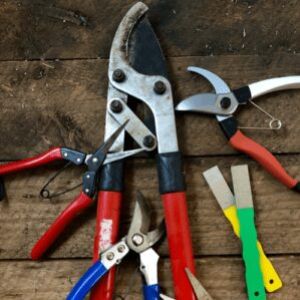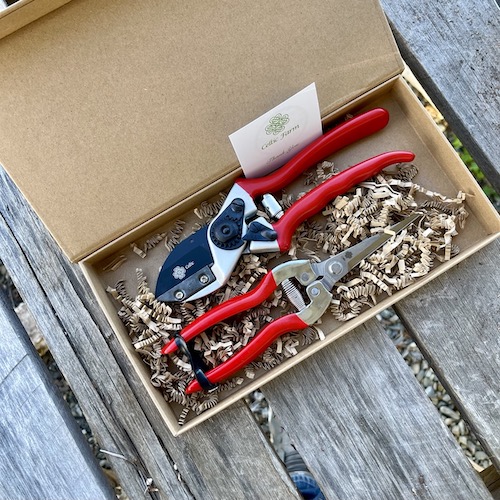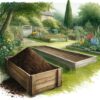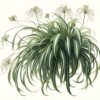Sharpen Your Garden Game: The Ultimate Guide to Choosing & Using Pruners
Choosing the Right Pruner
Welcome to our comprehensive FAQ guide on garden pruners! Whether you’re a seasoned gardener or just beginning to explore the joys of gardening, understanding the intricacies of pruning tools is essential. Pruning not only helps in maintaining the health and appearance of your plants but also encourages better growth and flowering. This guide is designed to answer all your questions about garden pruners, from choosing the right type for your gardening needs to tips on proper usage and maintenance. We cover various types of pruners, including bypass, anvil, loppers, and shears, along with advice on sharpening, cleaning, and safety practices. Our aim is to provide you with the knowledge you need to make informed decisions about the tools you use in your garden, ensuring your pruning tasks are both enjoyable and effective. Let’s dive into the world of garden pruners and enhance your gardening experience!
What types of pruners are there? There are several types of pruners, each suited for different gardening needs. Bypass pruners, with their scissor-like action, are great for precise cuts on living plants. Anvil pruners, with a single blade closing onto a flat surface, are ideal for dry or dead wood. Loppers provide extra leverage for thicker branches, while shears are best for trimming hedges and shaping. Ratchet pruners, with a mechanism that cuts in stages, are excellent for those with limited hand strength.
Which pruner is best for me? Selecting the right pruner depends on the type of plants you have, the thickness of the branches you’ll be cutting, and your personal preferences. For delicate work on living plants, bypass pruners are typically the best choice. For thicker, dead branches, anvil pruners or loppers are more suitable. Your own comfort and the pruner’s ease of use should also guide your decision.
Should I get manual or electric pruners? Manual pruners are sufficient for most standard gardening jobs and offer more precision. Electric pruners, on the other hand, are better suited for heavy-duty cutting tasks, especially where you need to make a lot of cuts, as they reduce hand fatigue.
What blade material should I choose? Blade material is critical for durability and performance. Carbon steel is known for its sharpness and edge retention but may require more maintenance to prevent rust. Stainless steel is rust-resistant and lower maintenance. Note that bypass pruners often need replaceable blades due to wear and tear.
What features are important for comfort and ease of use? Ergonomically designed handles, non-slip grips, and features like spring-assist or a ratchet mechanism can significantly enhance comfort and efficiency. These features are especially important for those who spend long periods pruning or have hand strength issues.
Using Pruners Correctly:
When is the best time to prune? The optimal pruning time varies based on plant type. Generally, late winter or early spring is ideal for many plants, as they are dormant and it’s easier to see the structure of the plant. However, some plants, especially flowering shrubs, may have specific pruning times to ensure blooming.
What cuts should I make? Making the right cuts is crucial for plant health. Angle your cuts to allow water to run off, and avoid flush cuts against the trunk to prevent damage. Focus on removing dead, diseased, or overgrown branches. Proper cuts promote healthy growth and prevent disease.
How do I sharpen pruner blades? Sharpening pruner blades is essential for clean cuts. Use a file or sharpening stone suitable for the blade material. Follow the original angle of the blade, and work carefully to maintain its integrity. Regular sharpening extends the life of your pruners and improves their performance.
How do I clean and store my pruners? After each use, wipe your pruners clean to remove sap and debris. Lubricate the blades and moving parts to prevent rust. Store your pruners in a dry place to avoid moisture damage. Proper cleaning and storage prolong the life of your pruners and keep them ready for use.
Can I use pruners to cut other things besides plants? It’s not recommended to use garden pruners for cutting non-plant materials. Doing so can dull the blades and potentially damage the pruners, making them less effective for their intended purpose.
Safety and Maintenance:
Do I need to wear gloves when using pruners? Yes, wearing gloves is highly recommended to protect your hands from cuts and thorns. Gloves also provide a better grip and can reduce blister formation during prolonged pruning sessions.
How do I prevent rust on my pruner blades? To prevent rust, wipe your blades dry after each use, especially if they’ve been exposed to moisture or plant sap. Applying a light oil to the blades can also help protect them from rust. Removing garden tool rust video expands on this.
What should I do if my pruner blades get bent? Bent blades can sometimes be carefully straightened, but this often requires skill and the right tools. After straightening, the blades may need to be sharpened. Severely bent or damaged blades might need to be replaced.
How can I tell if my pruner springs need to be replaced? If you notice reduced cutting power or difficulty in closing the blades, it could be a sign that the springs need replacing. Regularly inspect the springs for wear and replace them as needed to maintain optimal performance.
Can I repair broken pruners? Repairing broken pruners depends on the extent of the damage. Some parts, like springs or blades, can often be replaced. However, if the damage is significant, it may be more cost-effective to replace the entire tool.
Specific Questions:
What are loppers used for? Loppers are designed for cutting thicker branches, typically up to 2 inches in diameter, which are too large for standard pruners. They are also useful for reaching branches in harder-to-access areas thanks to their longer handles. Loppers come in various sizes and leverage mechanisms, allowing for more power in cutting through tough wood without causing strain to the user.
Can I use pruners for bonsai? Yes, specialized bonsai pruners are available and are highly recommended for bonsai enthusiasts. These pruners are designed for the delicate task of shaping bonsai trees, offering precision and a clean cut that is essential for the health and aesthetics of these miniature trees. Regular garden pruners might be too large and lack the necessary precision for bonsai care.
What are hedge shears used for? Hedge shears are designed for trimming and shaping hedges and shrubs. They have long, straight blades that are ideal for creating straight, clean cuts across larger surface areas, which is essential for maintaining the uniform appearance of hedges. These shears are not suited for cutting thick branches and are best used for shaping and maintaining foliage.
What are the best brands of pruners? Some of the most reputable brands in the gardening world include Celtic (Affordable quality) , Felco, and others. These brands are known for their quality, durability, and ergonomic designs. Each brand offers a range of products suited for different gardening needs and preferences, ensuring that there is a tool for every type of gardener.
Where can I buy good quality pruners? High-quality pruners can be purchased at hardware stores, gardening centers, and online retailers. When buying pruners, it’s important to consider the tool’s feel in your hand, its weight, and whether it suits your specific gardening needs. Online reviews and gardening forums can also provide valuable insights into the performance and longevity of various pruner models.
Bonus Tips:
- Check Local Resources: Many local gardening clubs or centers offer workshops or classes on proper pruning techniques, which can be incredibly beneficial for both novice and experienced gardeners.
- Practice Makes Perfect: If you’re new to pruning, consider practicing on dead branches before moving on to live plants. This practice helps you get a feel for the tool and the right cutting techniques.
- Never Overexert: Avoid using pruners to cut branches that are too thick for them. This can damage the blades and the mechanism, and it might even cause injury. If a branch is too thick, use a tool that’s more suited for the task, like loppers or a saw.
- Regular Maintenance: Regularly inspect your pruners for signs of wear and tear. Keeping them clean, sharp, and well-maintained not only makes your gardening work easier but also prolongs the life of the tool. Here is a video on sharpening your pruners.
Gardening pruners are invaluable tools for maintaining the health and beauty of your garden. Understanding the types, uses, and maintenance needs will help you make the most out of this essential gardening tool. Whether you are a seasoned gardener or just starting out, the right pruners can make all the difference in your gardening experience.
Here are some great follow on resources for pruning:












You must be logged in to post a comment.